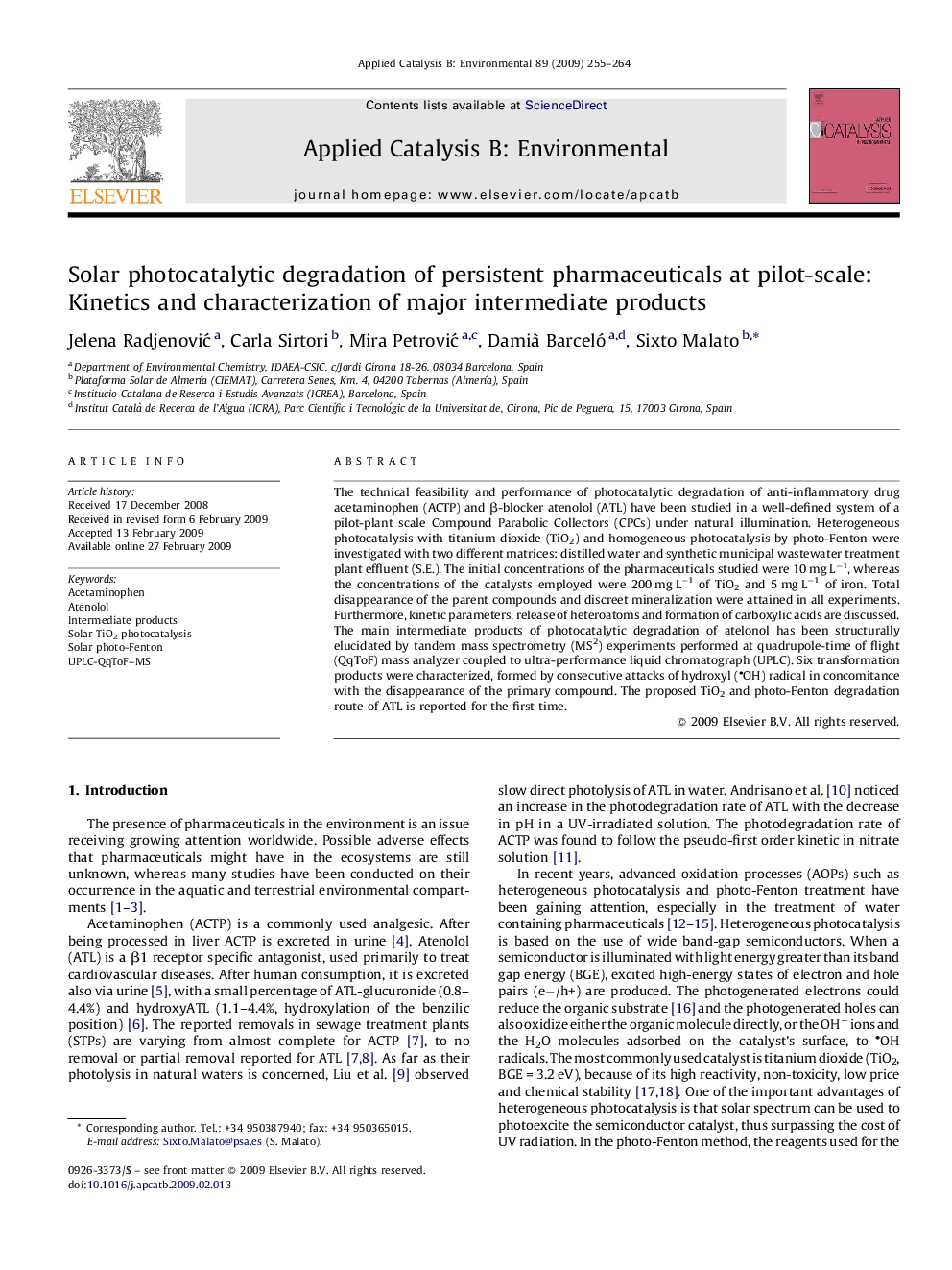| Article ID | Journal | Published Year | Pages | File Type |
|---|---|---|---|---|
| 47858 | Applied Catalysis B: Environmental | 2009 | 10 Pages |
The technical feasibility and performance of photocatalytic degradation of anti-inflammatory drug acetaminophen (ACTP) and β-blocker atenolol (ATL) have been studied in a well-defined system of a pilot-plant scale Compound Parabolic Collectors (CPCs) under natural illumination. Heterogeneous photocatalysis with titanium dioxide (TiO2) and homogeneous photocatalysis by photo-Fenton were investigated with two different matrices: distilled water and synthetic municipal wastewater treatment plant effluent (S.E.). The initial concentrations of the pharmaceuticals studied were 10 mg L−1, whereas the concentrations of the catalysts employed were 200 mg L−1 of TiO2 and 5 mg L−1 of iron. Total disappearance of the parent compounds and discreet mineralization were attained in all experiments. Furthermore, kinetic parameters, release of heteroatoms and formation of carboxylic acids are discussed. The main intermediate products of photocatalytic degradation of atelonol has been structurally elucidated by tandem mass spectrometry (MS2) experiments performed at quadrupole-time of flight (QqToF) mass analyzer coupled to ultra-performance liquid chromatograph (UPLC). Six transformation products were characterized, formed by consecutive attacks of hydroxyl (OH) radical in concomitance with the disappearance of the primary compound. The proposed TiO2 and photo-Fenton degradation route of ATL is reported for the first time.
